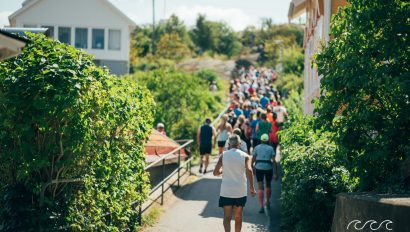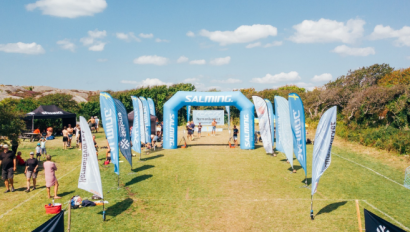Do You Need GPS Tracking for Your Race?

When planning a race, you may have encountered services that offer live or semi-live tracking of participants through GPS technology. In this article, we shed light on the benefits and drawbacks of these services, and explain what it is and how it works.
What is GPS Tracking and How Does it Work in a Race?
Given the name, GPS Tracking uses GPS Technology to determine an object’s position on earth. GPS stands for Global Positioning System and uses the satellite network placed in the atmosphere to measure distance and provide time for GPS devices on earth through radio signals. A device determines its position through communicating with multiple satellites simultaneously (trilateration). In general, a basic GPS service can provide users with 7-meter accuracy, 95% of the time near the surface of the earth (source).
As you can understand, this technology is very useful for race organizers to track racers’ live position in a race. As of now, GPS is the only way you can continuously track racers live. Although some chip timing providers may claim that they offer live tracking, this usually means you can ‘see’ participants at determined split-time checkpoints that have been set up throughout the race. As such, with timing chips or tags, you cannot track a continuous live position like you can with GPS.
When you use GPS Tracking in your race, each competitor must carry with them a live-GPS device for it to work. This can be either a little golf-ball sized box, or with an app downloaded to a smartphone or watch. This however, requires participants to take their phone with them in the race. That can be fine for bike, trail or other running races where many participants already bring their phone. Some people (often the faster ones..) may find it annoying that you require them to take their smartphone, and it will not work for wet races such as open water swimming, Triathlon or Swimrun. Or participants without phones.
Advantages of Using GPS Tracking for a Race:
Safety of Participants: you will know exactly where each participant is located and they usually have access to a distress or emergency button on their GPS device which can communicate with the race safety team. This is especially advantageous for long, remote or difficult races where you may not have marshalls covering large parts of the course. For a 5km race though, it may not make much sense to add GPS tracking for safety reasons.
Delight for Spectators: it gets really exciting if you can follow your friends and family across the race. Most GPS services or race-day apps offer the possibility to ‘view’ racers on a course map and see them progress as they pass rival competitors! It can really help to create excitement around the race, both for on-site spectators that want to be ready at certain points in the race to see the ones they are cheering for, as well as remote watchers. Live tracking can also be very helpful for commentators and live broadcasts!
Backup Timing method: as the technology becomes more and more accurate, it can be used as a back-up data source for timing – if your primary system fails. If your race doesn’t require timing to be super-accurate, it can even be used as a primary system too (but you should then have a manual system or finish line video back-up for when the GPS has problems…)
Exposure for Sponsors and Partners: Live timing gives you an extra opportunity to highlight any partners or sponsors you work with in yet another medium – whether it is on the live tracking website or inside the tracking app.
Disadvantages with GPS Tracking for Races:
It adds an extra expense. As it is yet another service to add, it will increase your costs for the race and you will have to make sure it fits into your budget. GPS tracking devices can cost around 10-30 EUR per participant to hire in addition to a smaller set up cost or cost per day, usually around 30-50 EUR. If you have more participants, the price-per-racer usually gets cheaper.
Racers may find it annoying. Whether you require racers to bring their phone, or carry an extra GPS device in a vest or pocket system, they may find it annoying due to it being uncomfortable or because of the extra weight.
The Future of GPS Technology and Racing
We expect GPS technology to improve more and more in the following years. Sports technology in general, is on a fast development curve and we are starting to see fantastic technologies being developed all the time for both racers and organizers. With more accurate and reliable GPS signal and devices, this technology will be possible to use for timekeeping solely. Imagine just setting up some checkpoints on a GPX map, and then you’re done! No need for heavy equipment transportation across the country and bulky setup in the forest… better for both your wallet and the environment. It will also be more exciting for spectators as you can have constant updates on participant positions and as many time checkpoints as you like – at no extra cost.
But what about the problem of the GPS device that your participants have to carry? This will most likely be solved by rapid development of convenient wearables containing GPS devices – such as smart watches. We believe most watch companies will go towards using existing operating systems (iOS – Apple Watch or Android – Polar for instance). Usually participants like to have their smartwatch or training watch on when they race, whether it’s a swim, trail or a bike race. Imagine, once we can have racers connect to the course and use their own smartwatches for timing, safety and live-tracking all in one! The best part? We are already there. At RaceID, we are working on a race-day app that uses GPS technology in exactly this way. You can read more here and apply for your race to become a beta-tester for this brand new system.


